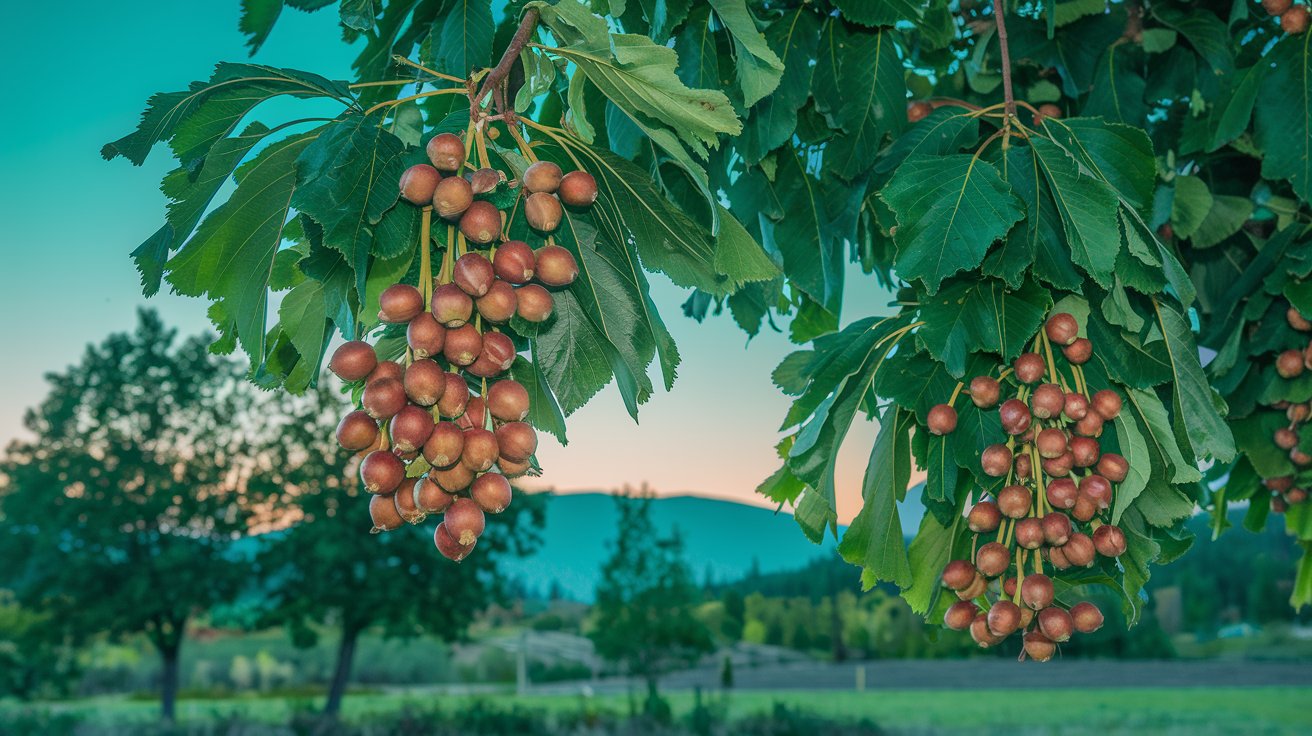Hazelnuts are a favorite among nut lovers, commonly used in chocolates, spreads, and other tasty treats. Their rich flavor and versatility make them a popular ingredient in many cuisines, but few people know where these delicious nuts actually grow.
In this guide, we’ll explore the regions where hazelnuts thrive and the conditions they need to grow. From ideal climates to cultivation tips, you’ll learn what makes hazelnuts special and how they are grown in different parts of the world.
Where Does Hazelnuts Grow?
Hazelnuts grow in different parts of the world, mostly in regions with mild weather and good soil. Turkey is the largest producer, followed by Italy and the United States. Spain, China, and France also contribute to global production. These areas provide the right climate for healthy hazelnut trees. These states provide the ideal mix of climate and soil quality needed for high yields.
How to Grow Hazelnuts?
Planting hazelnuts requires careful planning. Choose a sunny location with well-drained soil. Young trees need regular watering, especially in dry months. Keeping the area weed-free and pruning the branches helps maintain a healthy structure. Patience is key, as hazelnuts take a few years to start producing nuts.
How Big Do Hazelnut Trees Grow?
Hazelnut trees are relatively small compared to other nut-bearing trees. They usually grow between 10 to 20 feet tall, making them manageable for home gardeners and farmers alike. With the right care, some trees can reach up to 25 feet, creating a beautiful landscape addition.
Where Will Hazelnut Trees Grow?
These trees adapt well to USDA zones 4 to 9. They flourish in regions with cool winters and moderate summers. A steady water supply and proper soil conditions ensure steady growth. They are a great choice for orchards and backyard gardening.
Hazelnut Growing Regions
Hazelnuts are mainly cultivated in select global regions:
- Turkey: Produces over 70% of the world’s hazelnuts.
- Italy: Known for premium varieties used in gourmet chocolates.
- United States: Oregon and Washington lead in American production.
- Spain: Produces high-quality nuts for export.
- China: A growing player in hazelnut farming.
Hazelnut Tree Climate Requirements
For a successful harvest, hazelnut trees need the right environment. They grow best in places where:
- Temperatures range between 45°F and 85°F.
- Winters provide at least 800 chill hours.
- Rainfall is moderate, around 30 inches per year.
Extreme heat or frost can affect yields, so choosing the right location is essential.
Hazelnut Cultivation Zones
Hazelnut farming is common in areas with a Mediterranean-like climate. In North America, hazelnuts thrive in specific parts of the Pacific Northwest. In Europe, they are widely grown in France, Spain, and Italy. China is also expanding its hazelnut cultivation industry.
Best Soil for Hazelnut Trees
Soil quality plays a huge role in the success of a hazelnut orchard. The ideal soil type is:
- Well-drained with good aeration.
- Rich in organic matter for strong root growth.
- Slightly acidic to neutral (pH between 5.5 and 7.5).
Proper soil preparation before planting helps the trees establish strong roots.
Hazelnut Tree Growing Conditions
To achieve a good harvest, hazelnut trees need:
- Full sunlight for at least six hours a day.
- Regular but moderate watering, avoiding waterlogging.
- Pruning to maintain shape and improve airflow.
- Protection from strong winds to prevent branch damage.
With the right care, they can produce high-quality nuts for years.
Hazelnut Producing Countries
A few countries dominate hazelnut production due to ideal growing conditions:
- Turkey: The global leader in hazelnut exports.
- Italy: Produces nuts mainly for confectionery.
- United States: Grows hazelnuts primarily in Oregon.
- Spain: Supplies top-grade hazelnuts to European markets.
- China: Rapidly expanding its cultivation industry.
Each region has unique techniques to improve quality and yield.
Hazelnut Tree Care
Caring for hazelnut trees ensures a strong, healthy harvest. Follow these key steps:
- Water deeply but do not let roots sit in water.
- Fertilize regularly using organic compost or balanced nutrients.
- Prune annually to remove weak branches and shape the tree.
- Monitor for pests and take early action to prevent damage.
- Protect young trees from frost by mulching around the base.
A well-maintained tree can produce nuts for decades.
Hazelnut Varieties
There are several types of hazelnuts, each with unique flavors and uses:
- Barcelona: A popular choice for large-scale production.
- Jefferson: Resistant to pests and produces high yields.
- Ennis: Known for its extra-large nuts.
- Tonda Gentile: Famous for use in Italian chocolates.
- Turkish Tombul: Valued for its rich, sweet taste.
Each variety serves different culinary and industrial needs.
Hazelnut Pests and Diseases
Like all crops, hazelnuts face threats from pests and diseases. The most common ones include:
- Eastern Filbert Blight: A fungal infection that weakens trees.
- Aphids: Insects that suck sap and reduce tree health.
- Weevils: Beetles that attack the nuts inside their shells.
- Mites: Tiny pests that cause leaf damage and slow growth.
Preventive care and organic pest control methods help keep trees healthy.
Sustainable Hazelnut Farming Practices
Sustainability is key to long-term hazelnut production. Farmers adopt eco-friendly techniques such as:
- Crop rotation to maintain soil nutrients.
- Organic fertilizers to promote healthier growth.
- Integrated pest management to reduce chemical use.
- Water conservation through drip irrigation systems.
These methods ensure that hazelnut farming remains productive without harming the environment.
Conclusion
Hazelnuts grow in select regions worldwide, requiring the right climate, soil, and care. From Turkey’s large farms to small backyard gardens, these trees are valued for their delicious nuts. Whether you are a farmer or just curious, understanding hazelnuts helps appreciate the effort behind every bite. With proper planting, care, and sustainability, hazelnuts will continue to be a favorite for generations to come.
Frequently Asked Questions (FAQs)
1. Where do hazelnuts grow best?
Hazelnuts grow best in temperate regions with mild winters and cool summers, such as Turkey, the USA (Oregon), and parts of Europe.
2. How long does it take for a hazelnut tree to produce nuts?
A hazelnut tree typically starts producing nuts in 3 to 5 years, reaching full production around 7 to 10 years.
3. What is the best soil for growing hazelnut trees?
Well-drained, loamy soil with a pH of 5.5 to 7.5 is ideal for hazelnut trees to thrive.
4. Do hazelnut trees need a pollinator?
Yes, most hazelnut trees require cross-pollination from another compatible variety for better nut production.
5. Are hazelnuts easy to grow?
Hazelnuts are relatively easy to grow, needing proper soil, moderate water, and regular pruning to stay healthy.





